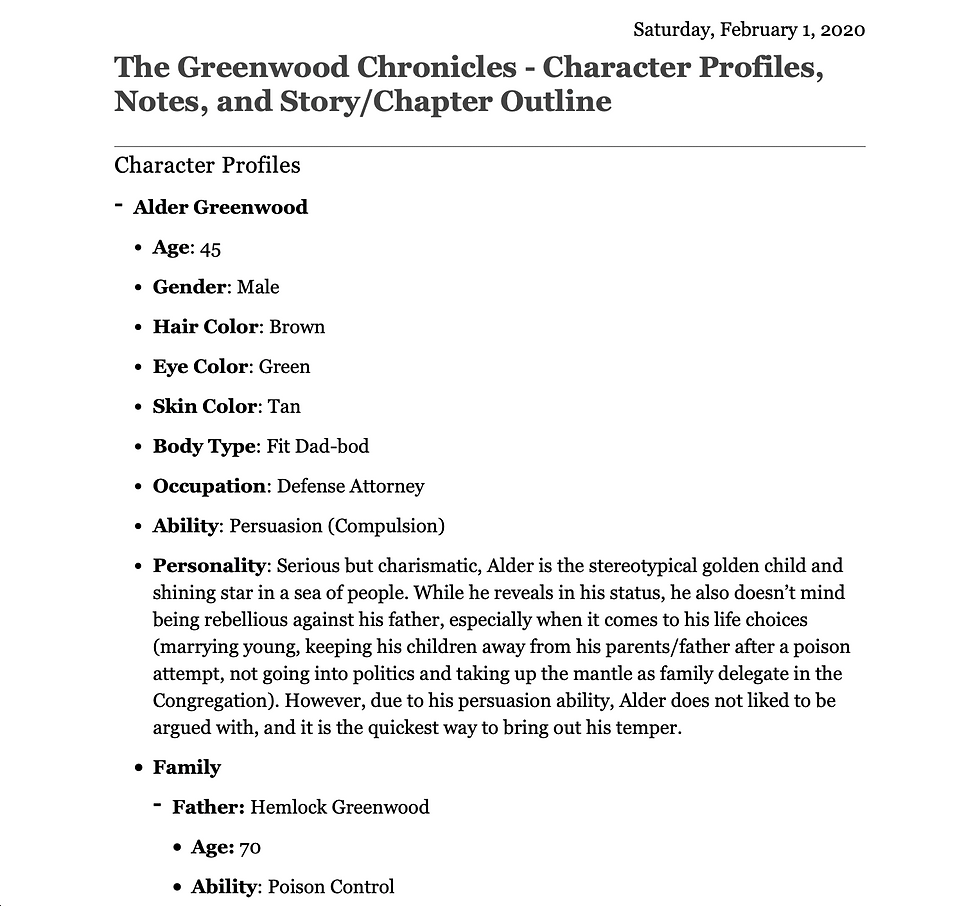How to Plan a Novel
- Caitlin Loftus

- Jul 22, 2020
- 5 min read
Updated: Nov 22, 2023
Planning a novel is crucial to the process, especially if you don't want to have inconsistencies in the novel itself.
Writing can seem like a daunting task as it is the act of putting our thoughts into the physical world. Writing a novel even more so, especially because it is seen as the most elevated type of writing. My advice today is going to focus on how to plan out your novel before writing it.
Research: Every story requires research. Authors need to research in order to make a story authentic. No one knows everything there is to know about everything. People know certain subjects very well (for instance, I know a lot about certain video games and TV shows). For example, if I was to write a historical fiction novel, I would definitely need to research the time period, events, culture, and society. If I were to just write the novel with no research, then the book would be historically inaccurate and not even be considered historical fiction. In order to write about topics in fiction (well, any genre really) you need to know the material. I wouldn't write science fiction because I have no understanding of the mechanics that are involved in computers, physics, and other scientific topics. If I were to research these subjects to an extensive level, then I could probably write a sci-fi novel (although I would have someone who is well versed in the topics look at my story to make sure the science parts were accurate). The point is to research extensively before you take a subject you don't know (and one you do as well because the information is always changing).
Outline: One of the most difficult issues with writing is getting caught up in what we are writing. Sometimes, it's a good thing and can lead to good writing. However, in my experience, outlining a novel/story is the best bet to smooth writing. Outlining a novel can help limit plot holes, plan out ideas, and create cohesive storylines. I spend a lot of time planning out what my points are, the setting, and the background before I start writing. It helps keep your plot from becoming like a new season of Riverdale, which has become a hot mess. I use various methods for my outlines. All are broken down by each chapter. Then I break down each chapter by either dates/times, scenes, or by plot points. I make sure to end certain chapters on a cliffhanger or the closing of a scene/time.
Here's an example of how I break down a chapter:

Note how I use bullet points to help break up my plot points. I try to keep the points brief, and if extra information is needed then I put a sub-bullet point underneath that provides the information. The bullet points help break down my ideas and make organization easier in the long run. Let's say that later on I need to add some information, I can easily find the section of the chapter/plot point that the information needs to go. If I didn't outline, then I would forget to put the information in the wrong place creating inconsistencies or plot holes.
Some other examples are timelines (great to use for time-travel or stories that take place with a lot of flashbacks), story plots(just google story plot and go to images; those graphics can help outline the overall story before you get into the details), diagraming with flow charts (i.e. storyboarding), etc.
Character Profiles: Character profiles are one of the best tools to use while writing characters because they help you keep your character in, well, character. Profiles are an easy reference tool so that you can remember important and key information without having to go back through your writing for a piece of information that you are missing. It helps lessen mistakes and inconsistencies that might end up in a story. The way I create character profiles is by keeping records of all their biographical information (i.e.: personal history, family, physical and personal characteristics, interests, and so forth).
Here's an example of a character profile from a book I've been writing:

Obviously, this isn't the entire profile, but note how I have each section divided into bullet points, and the only real point that is more than a few words is the personality (which I also mixed with a little bit of personal history). I don't really have a personal history section, but I will probably add one later on as I continue my outline/figure out what I want to add to the story that was influenced by their past.
Again, this is the way that I've done it. Some other examples are: creating an infographic for each character, or using a pre-existing character sheet online (such as players do for D&D).
Write Out Scenes As One-Shots/An Anthology: This is a new technique I've been using to help with my writer's block. I sometimes find it hard to write in a linear order, and some scenes just come to me naturally that I would place later in a story. I like to write those scenes out when inspiration hits me because 1) I get to practice writing, and 2) these scenes can help shape my story.
For example, I wrote out an entire scene between two of my characters (a grandmother and her teenage granddaughter) that talked about strife in the family (mainly the teenager's struggle with her sister abandoning the family -thus putting a lot of the pressure on her to marry up- after their mother didn't support her being gay). I had an idea of writing the scene to showcase the tension between her mother and herself, and how she looks toward her paternal grandmother for guidance. However, it became much more than that when I thought about the older sister and her role in the situation. I had always known that the older sister was going to be gay, but I didn't think of how it would affect the family/the protagonist. The scene also added the dimension of the younger sister not truly understanding the pain the older one was/is going through in regards to their mother. This scene also adds characterization not only to the main protagonist and grandmother but also to the older sister and mother.
All-in-all, the points I made above are just suggestions of ways to outline your novel. There are many different ways to do each of those points, but these are the basic four that will really help get you started. Tinker around with each idea until you find the right one for you. Remember: just because it works for me doesn't mean it will work for you. Find your own rhythm and go with the way that works best for you.



Comments